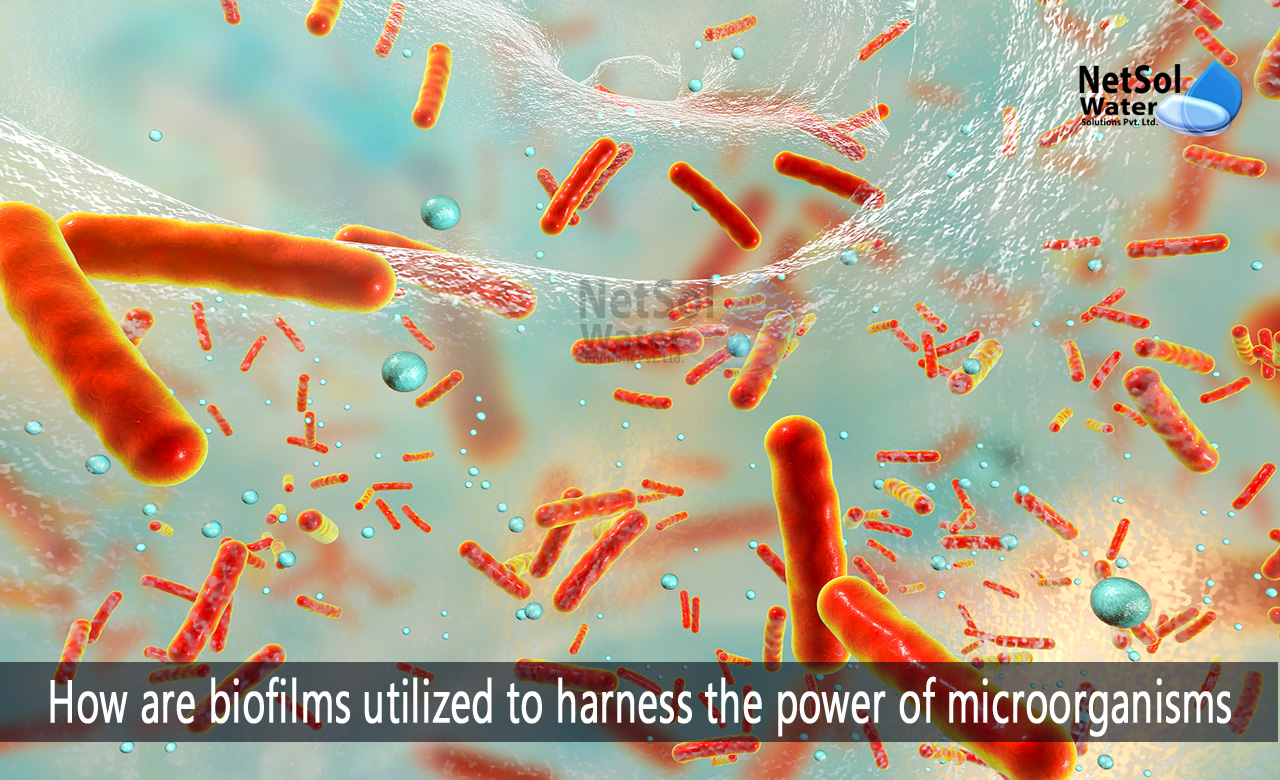Water contamination and human health issues are the result of a number of reasons, including fast urbanization, industrialisation, population growth, and changing lifestyle patterns. Wastewater treatment is crucial in this situation to safeguard the environment, and avoid contaminating the water supply.
Recent years have seen a significant increase in interest in biological wastewater treatment, as a potent technique to treat wastewater and its release into the environment. The bacterial population is employed in this process to break down organic waste, into harmless by-products that do not affect the environment or water bodies.
These strong bacteria have long been described as freely suspended. However, biofilms, which are multicellular aggregates bound to surfaces and interfaces by microorganisms, are also prevalent. This clarifies how bacteria function in the treatment of wastewater.
What are biofilms?
A biofilm is a community of microbes or a collection of microbial cells adhered to a surface. Extracellular Polymeric Substances, a protective concoction of sugary released molecules, surround and hold together this very basic protective biofilm.
It is created by bacteria interacting with one another, and they release a material resembling glue that creates a sticky surface, which enables them to work together. Additionally, they can locate sufficient food flow and develop surface attachment in practically all moist environments, where they are present.
Biofilms in the Treatment of Wastewater
Wastewater treatment plants offer a constant stream of food in the form of carbon and other nutrients found in the waste, creating the ideal conditions for microorganisms to live and grow.
The removal of biological nutrients, which pollute water sources and result in eutrophication, fish kills, and the degradation of the aquatic ecosystem, is one of the main objectives of the wastewater treatment process. Additionally, it may harm the environment, have an impact on animal life, and harm people. Thus, through the secondary treatment processes which form flocs, harmful nutrients are eliminated.
These flocs are the same as biofilms since, they have an EPS and microbial-created protective environment. Numerous organic molecules, such as those containing nitrogen and phosphorus, among others, are known to be broken down by it.
Additionally, because of its sticky nature, it can attract heavy metals, nanoparticles, and viruses. Biofilms assist bacteria in recovering more quickly and expedite the treatment process, in circumstances where wastewater systems are subjected to heavy waste loads.
How are biofilms utilized to harness the power of microorganisms?
Biofilm formation is a difficult process. It involves biological processes, the expression of genetic genotypes, and signal molecule-induced communication. Let’s understand the stages of biofilm formation.
· Film Formation
In the first stage, an inorganic solute and organic-molecule-rich conditioning surface is attained in the wastewater.
· Initial attachment
In the second stage, bacteria and other microorganisms move towards the film surface, using Brownian motion and establishing a bond.
· Extracellular Polymeric Substances (EPS) formation
EPS begins to form in the third step, which is irreversible attachment. The bacterial cells are successfully attached to the surface via EPS as well. Enhancing protection and obtaining nutrients for the bacterial community's growth, are crucial functions of EPS.
Bacteria and film are bound together by a variety of factors, including hydrogen bonding, electrostatic forces, and Van-der-Waals forces.
· Replication and maturation
It involves cell divisions that cause bacterial cells to grow in three dimensions on the surface, using nutrients taken from the biofilm surface. Microclusters multiply as the bacteria grow and a surface of the bacteria develops on the film.
The mature films adjust to the varying pH levels, nutrients, temperature, etc. in the wastewater environment.
· Dispersion
The final step happens when the wastewater treatment system's conditions deteriorate dramatically. As a result, bacteria from the existing biofilm community separate and search for better communities.
Benefits of Biofilms in the Treatment of Wastewater
· Bacteria are shielded by biofilm from the effects of environmental stress and antimicrobial agents.
· It allows for minimal retention times and operational flexibility.
· Slower microbial growth rates result in lesser sludge output.
· Extreme alterations to the wastewater environment are not harmful, to the microbes in the biofilm.
Choosing the best manufacturers and service providers of wastewater treatment plants
For variety of industries, Netsol Water is a pioneer in creating sophisticated, environmentally friendly, and sustainable solutions. After years of devoted research in the area, the wastewater treatment vertical has created effective treatment solutions, for the treatment of industrial and municipal wastewater.
Netsol Water is Greater Noida-based leading water & wastewater treatment plant manufacturer. We are industry's most demanding company based on client review and work quality. We are known as best commercial RO plant manufacturers, industrial RO plant manufacturer, sewage treatment plant manufacturer, Water Softener Plant Manufacturers and effluent treatment plant manufacturers. Apart from this 24x7 customer support is our USP. Call on +91-9650608473, or write us at enquiry@netsolwater.com for any support, inquiry or product-purchase related query.



